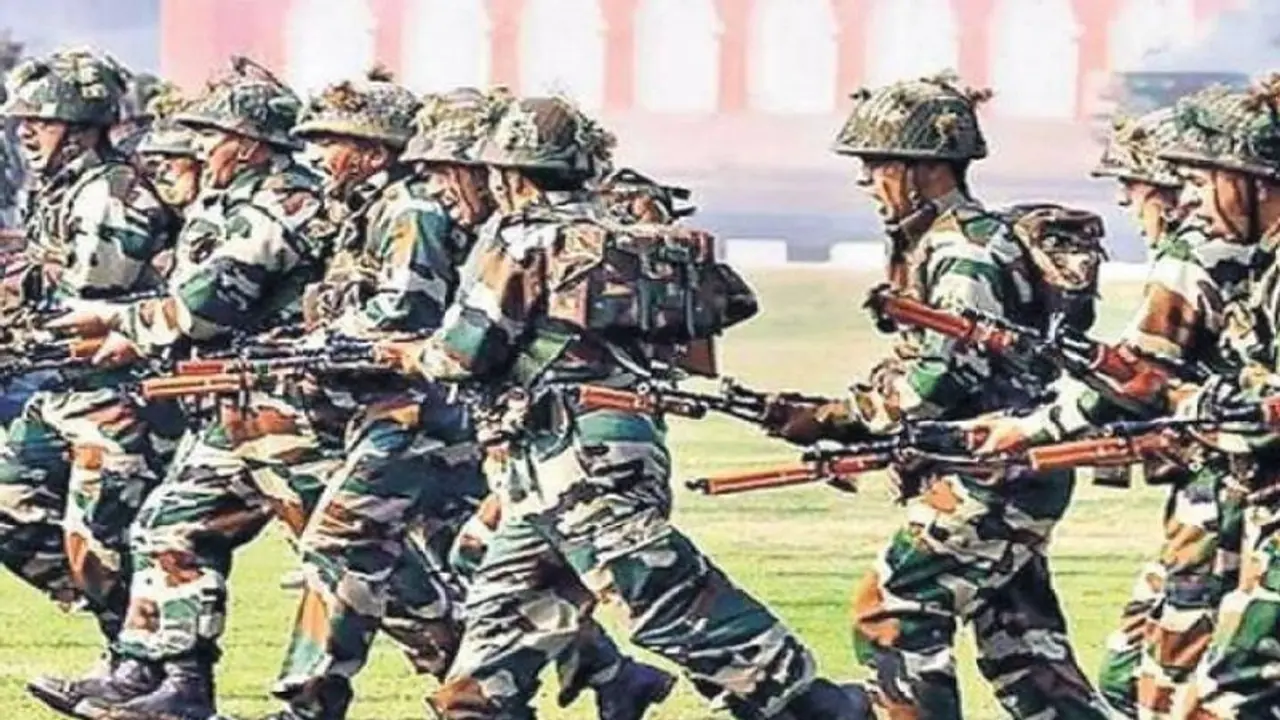The Agniveer recruitment process modernizes and streamlines military hiring in India, shifting from a cumbersome three-step system to a technology-driven model. Candidates now register online and take an initial Combined Entrance Exam (CEE) before physical tests, enhancing transparency and efficiency. This change addresses previous issues of fraud.
The Agniveer recruitment process is a testament to the Indian military's commitment to modernisation and efficiency. This process is designed to be modern, transparent, and hassle-free, effectively minimising the influence of training academies, touts, and fraudulent enrolments. This overhaul marks a significant shift from the erstwhile recruitment methods, ensuring a fair and merit-based selection of candidates.

The previous recruitment system was plagued by misleading practices from training academies and middlemen. Fraudulent enrolments through falsified documents were also a concern. These issues not only compromised the integrity of the recruitment process but also demoralised genuine candidates. Recognising these flaws, the Indian military has revamped the entire recruitment process for Agniveers in the three Services, making it modern, transparent, and hassle-free.
Ismail Haniyeh assassinated: What Hamas chief's killing means for stability of region amidst Gaza war?
The Indian Army recruits soldiers through a comprehensive recruitment process managed by the Recruitment Directorate and 11 Zonal Recruitment Offices. Until 2023, this process involved three steps: a physical rally, a medical test, and a written exam. Candidates had to travel long distances and participate in various tests and procedures, often leading to exhaustion and disillusionment. Despite stringent measures, the possibility of fraud and the non-selection of meritorious candidates existed.
The new process eliminates these issues by leveraging technology and automation. The recruitment process now begins with online registration, eliminating the need for candidates to visit Army Recruitment Offices (AROs) or Branch Recruitment Offices (BROs). This is followed by an online Combined Entrance Exam (CEE), which serves as the initial filter. Only selected individuals proceed to the physical rally and medical tests, significantly reducing the number of candidates at these stages and making the process more manageable and efficient.
The shift to an online examination is crucial as it significantly reduces the potential for fraud and scams. The improved network connectivity across India has empowered the youth to take the online exam from their homes, eliminating the need for long travels. Introduced in the recruitment year 2023-24, the Online CEE embodies the spirit of "Candidate First." The exams were conducted in 375 centres across 175 towns and cities, ensuring coverage even in remote and inaccessible regions like the North East and Jammu & Kashmir.
The advantages of the new system are manifold. Firstly, the entire recruitment system is now more robust and transparent, with minimal human interference. Automation ensures a merit-based selection process, free from biases and manipulations. The Online CEE acts as an initial filter, reducing the number of candidates appearing for physical rallies and medical examinations. This has resulted in a more efficient process, reducing the duration of recruitment rallies from 13-15 days to approximately 6-7 days, and saving time, effort, and funds.
Moreover, the requirement for combatant manpower to conduct rallies and medical exams has been reduced significantly. This allows the military to allocate resources more effectively and focus on operational readiness. The transparency of the process is further enhanced by the integration of the registration portal with DigiLocker, which verifies candidates' Aadhar cards and reduces the scope for fraudulent registrations.
Antenna modifications, orbital constraints set back Indo-US NISAR launch to 2025
Over the past two years, the Online CEE has been conducted seamlessly for over 11 lakh candidates each year. The feedback from candidates regarding the new recruitment process has been overwhelmingly positive. The optimum utilisation of technology to conduct a transparent and fair recruitment cycle across India is a prime example of how a digitally aware and empowered society can seamlessly adapt to transformational changes.
The Agniveer recruitment process exemplifies modernisation, transparency, and efficiency. By minimising human interference and leveraging technology, the Indian military has ensured a fair and merit-based selection of candidates. The success of this process underscores the military's commitment to evolving with the times and maintaining the highest standards of integrity and fairness. As we move forward, the Agniveer scheme stands as a beacon of progressive change in military recruitment, setting a precedent for other sectors to follow.
(The author of this article is a Defence, Aerospace & Political Analyst based in Bengaluru. He is also the Director of ADD Engineering Components, India, Pvt. Ltd, a subsidiary of ADD Engineering GmbH, Germany. You can reach him at: girishlinganna@gmail.com)
